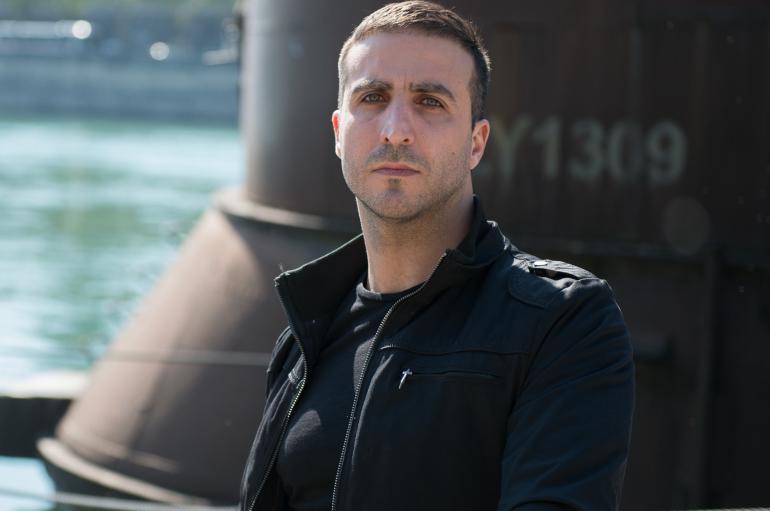
Composer Felipe Lara is hailed as “a gifted Brazilian-American modernist” by The New York Times, with his works being described as sensational, exuberant, vivid, brilliantly realized, excellent, technically formidable, wildly varied, and possessing voluptuous, elemental lyricism. He is known for creating unique musical contexts by reinterpreting and translating acoustical and extra-musical properties of familiar source sonorities into project-specific forces. His compositions aim to establish self-similar relationships between the macro and micro-articulation of the musical experience.
On May 17, the Grossman Ensemble will premiere Lara's composition Mosaic Maze. Learn more about Lara below, and read his thoughts on Mosaic Maze, labyrinths, and his experience working with the Grossman Ensemble.
Your piece is titled Mosaic Maze. What are the "pieces" of this mosaic?
There are many dimensions to the pieces of this mosaic. They are represented from simple surface level building blocks, such as recurring wood and skin percussion articulations, as well as more complex temporal aspects where the pieces are specific relative durations, ensemble aspects where each instrument represents a small atom of a larger global timbre or tutti; pitch aspects where the very distances between each note are employed as symmetrical mosaics; but most importantly for the listener, they are small fragments of recurring general characters and motives, such as large and resonant block chords and their various transformations, noisy sounds, pointillistic and incisive sounds, and long microtonal melodies sculpted especially by the oboe, but also by woodwind section as an entity.
You've previously stated that Mosaic Maze embarks "on a journey through an imaginary, fractal-like labyrinth." Is there any sort of metaphorical string, or trail of breadcrumbs, that helps to guide the listener through this maze?
Leaving too clear a trail of breadcrumbs here would defeat the purpose of building a maze, no?
What I encourage the listener to do instead is to simply be open to enter this labyrinth, pay attention to its patterns and sensations, navigate its sharp turns and dead-ends, capture new glances of revisited familiar territories, get entangled in loops, explore new vistas, and continuously zoom their ears in and out of each musical layer and sonority.
Your compositions often seek to establish self-similar relationships between macro and micro-articulations within the musical experience. How does Mosaic Maze fit into this compositional journey, and how might it do so differently than your previous works?
This is hardly a method of any kind, but an old fascination of mine with complex, kaleidoscopic, and intriguing shapes and proportionality found in fractals. I don’t always work like this at all, but whenever I do choose this attitude for a piece, it is just the initial blueprint or starting point, which does indeed contaminate almost every musical parameter…but, as soon as the pencil hits the manuscript with the first note, the actual composing process always becomes rather elastic, not unlike sculpting. What happens to these non-linear and self-similar trajectories, work-by-work, is always different. Seldom the journey is completed as planned. Things happen along the way, the music might get stuck in an interesting corner, time might stop altogether, or things might break completely in the process.
When you heard the Grossman Ensemble perform your work for the first time, were there any moments that surprised you or uncovered a new layer of the piece?
Absolutely, while the piece as a whole was very much as I envisioned, there were dozens of mini surprises at the local level…this has been a very organic process, little by little I was able to tweak each detail of the score to achieve utmost clarity of depth, trajectory, and detail.
What has your overall experience been like working with the Grossman Ensemble?
My experience working with Grossman has been as wonderful as it could possibly be. They are incredibly talented, creative, sophisticated, and warm both as a group as well as individuals. I have nurtured each second of our interactions; the exchange of ideas has been at once ferociously engaging and professional, but also mellow, friendly, and ultimately all about making new music together. This is a really ideal and rare situation, where the composer can have both the power and color possibilities of a larger ensemble, without sacrificing even an inch of intimacy, virtuosity, agility, flexibility, depth, and also very importantly ample and sufficient rehearsal time, often only possible in chamber music. This is a luxury, which is never possible when working with a symphony orchestra, for example, or even many sinfonietta-type groups. Each rehearsal has been incredibly productive and the feedback I received from the musicians and conductor has deeply impacted not only the final version of the piece, but my very knowledge of this type of formation...one that I so dearly love writing for.
When you're not actively composing, what do you like to do in your free time to relax and stay inspired?
That’s easy, spending time with my amazing wife and two kids, ideally on a beautiful beach somewhere. I am heading to Western Australia two days after the concert….to do just that.
